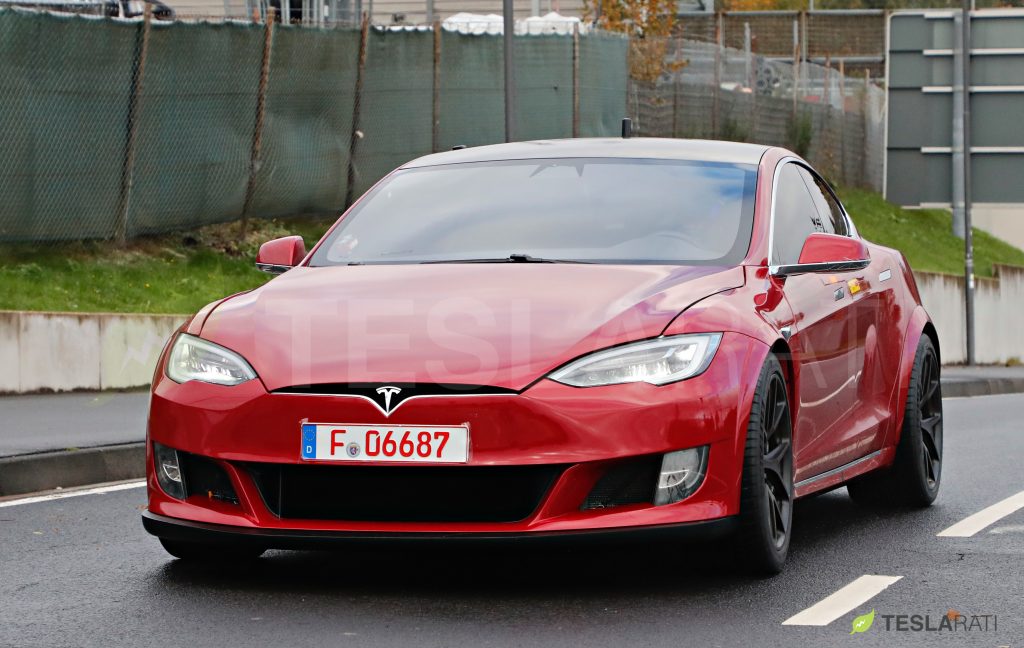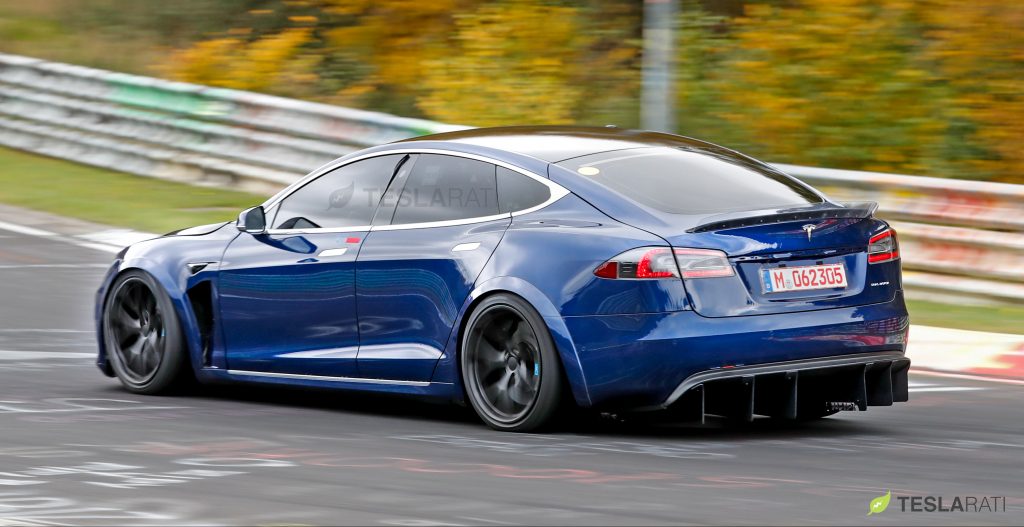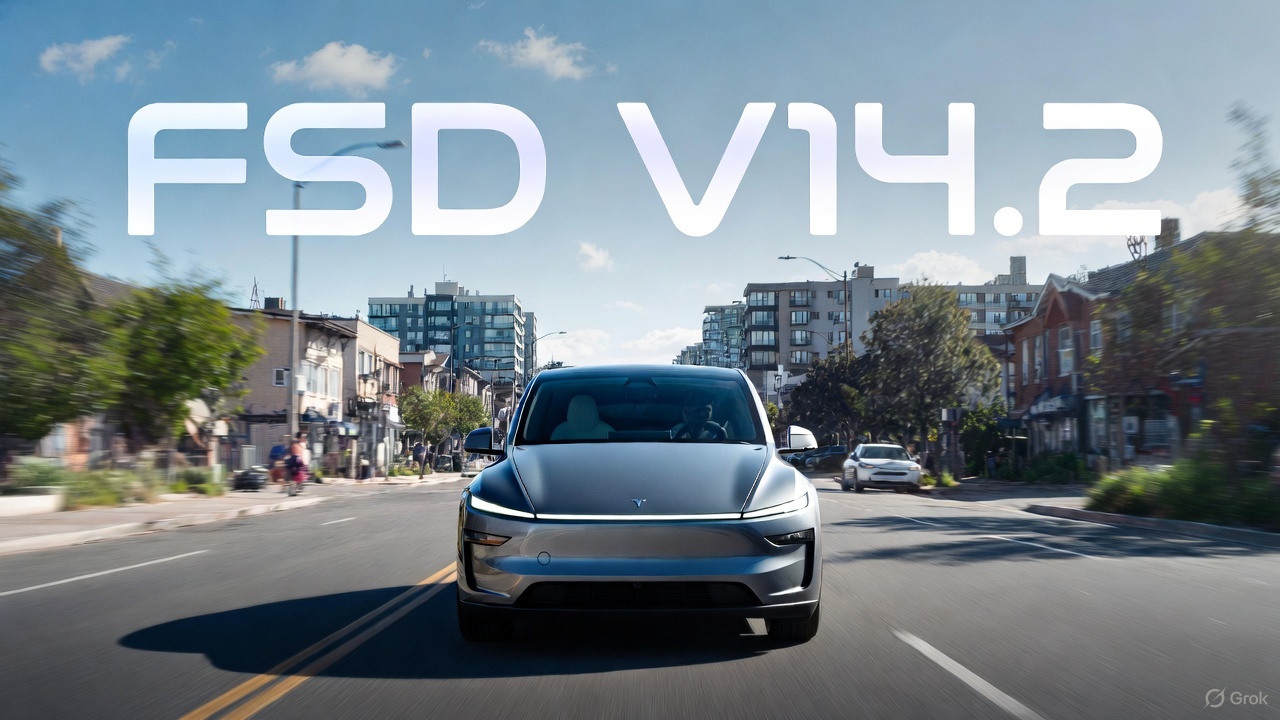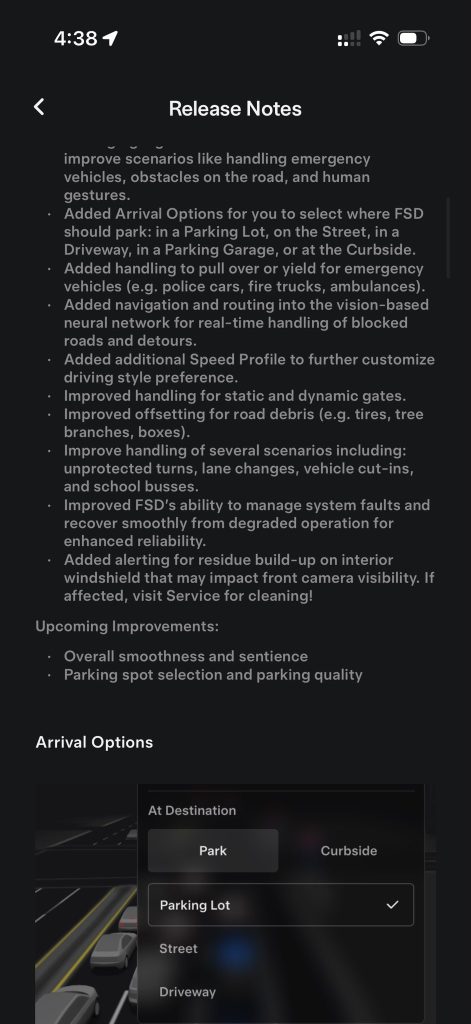

News
Tesla Model S Plaid: Everything we know – performance, features, versions and more
Elon Musk remarked during the recently-held third-quarter earnings call that Tesla is continuing the production of the Model S more for “sentimental reasons.” The vehicle, after all, is a niche product compared to the best-selling, reasonably-priced Model 3. Yet, the Model S remains Tesla’s flagship car, and it will remain so, if Musk’s statements are any indication.
“The Model S literally won Motor Trend‘s best car ever in history by the way. It’s incredible, especially the new one with variable damping suspension, hospital operating room HEPA filter for air purification, the raven powertrain. It’s the fastest car in the world, and it’s just so easy to drive. It makes you feel like Superman driving that car. It’s incredibly safe. It’s just an amazing vehicle,” Musk said.
The Model S is Tesla’s first car that it designed from the ground up, and thus, is already about seven years old. As such, it appears that the time is right for Tesla to look into updating the Model S for the Model 3 and Model Y era.
Enter the “Plaid” Model S. The aggressively styled vehicles were brought to the Nurburgring seemingly as part of Tesla’s efforts at establishing its own record at the track, which just so happens to be the location where the Porsche Taycan — a car long expected to be a Model S rival — was tempered as it was refined for release.

Based on images and videos of the Model S Plaid, the vehicle seems to be every bit of a monster as intended by the electric car maker. Here’s what you need to know about Tesla’s Model S with Plaid Powertrain.
It will look slightly different
While the vehicles retain the classic general Model S look, Tesla’s Plaid prototypes in the Nurburgring today feature a widebody kit to accommodate wider tires. The vehicles are also optimized for track use, as could be seen in various aero improvements to the all-electric sedan. Among these are a larger front air intake, a front lip spoiler, large air vents behind the front wheels, a diffuser at the rear, and a new spoiler.
Being test units, it remains uncertain if the Plaid Model S production version will retain these aero enhancements.
It will have three motors
Taking a page from the next-generation Tesla Roadster’s playbook, the Plaid Model S will have a three-motor configuration. Tesla has not announced details about this setup, though one can infer that it involves placing two motors at the rear and one motor at the front, just like the company’s upcoming all-electric supercar.
It will be track-capable
The Model S, even at its P100D trim, was notoriously prone to throttling issues on the track. Not so with the Plaid version. The Plaid Model S is made to attack corners at incredibly high speeds and complete multiple laps around a track without losing performance. So far, comments from eyewitnesses at the Nurburging have remarked that the Plaid vehicles Tesla brought over are almost disturbingly fast, and even at their initial iterations, each vehicle was reportedly finishing five or six laps a day around the nearly 13-mile Nurburgring with optimum performance.

It will likely have at least two trims
Tesla’s Plaid Powertrain appears to be a direct reference to the three electric motors in the vehicle. But it appears that the electric car maker will be releasing more than one variant of its tri-motor Model S. During its initial excursion to the Nurburging, it was reported that the blue Plaid Model S unit was able to complete a 7:40 lap, close to the results of the Taycan Turbo. The red Model S Plaid prototype, on the other hand, achieved a hand-stopped time of 7:23.
This certainly seems to be an indication that the two prototypes correspond to different versions of the vehicle. It might be cliche or Elon Musk’s classic meme lord-worthy humor, but it appears that its red Plaid Model S is the faster of its two prototypes. This is quite interesting, as spy shots of the blue Plaid Model S seem to suggest that the car was stripped down, while the seemingly faster red Model S is attacking the track with all its door panels and extra seats.
Its price will be expensive but cheaper than the Taycan Turbo
Elon Musk has noted on Twitter that the Plaid Model S will be priced higher than the Raven Performance version that is on sale today, though he also noted that the vehicle will cost “less than our competitors.” With this in mind, it appears that a Plaid Model S will start between the $100k-$150k range. This seems to be the case considering that Porsche priced its Taycan Turbo variant at just over $150k before options.
It will enter production in less than a year
Elon Musk has stated that the Tesla Model S Plaid units are set for production around Summer 2020, which is also around the same time that the company will start manufacturing the Model Y crossover. This is quite in line with previous leaks from the Fremont plant, which pointed to the electric car maker tooling the facility for the production of the Model Y and an updated Model S.

Elon Musk
SpaceX Starship Version 3 booster crumples in early testing
Photos of the incident’s aftermath suggest that Booster 18 will likely be retired.

SpaceX’s new Starship first-stage booster, Booster 18, suffered major damage early Friday during its first round of testing in Starbase, Texas, just one day after rolling out of the factory.
Based on videos of the incident, the lower section of the rocket booster appeared to crumple during a pressurization test. Photos of the incident’s aftermath suggest that Booster 18 will likely be retired.
Booster test failure
SpaceX began structural and propellant-system verification tests on Booster 18 Thursday night at the Massey’s Test Site, only a few miles from Starbase’s production facilities, as noted in an Ars Technica report. At 4:04 a.m. CT on Friday, a livestream from LabPadre Space captured the booster’s lower half experiencing a sudden destructive event around its liquid oxygen tank section. Post-incident images, shared on X by @StarshipGazer, showed notable deformation in the booster’s lower structure.
Neither SpaceX nor Elon Musk had commented as of Friday morning, but the vehicle’s condition suggests it is likely a complete loss. This is quite unfortunate, as Booster 18 is already part of the Starship V3 program, which includes design fixes and upgrades intended to improve reliability. While SpaceX maintains a rather rapid Starship production line in Starbase, Booster 18 was generally expected to validate the improvements implemented in the V3 program.
Tight deadlines
SpaceX needs Starship boosters and upper stages to begin demonstrating rapid reuse, tower catches, and early operational Starlink missions over the next two years. More critically, NASA’s Artemis program depends on an on-orbit refueling test in the second half of 2026, a requirement for the vehicle’s expected crewed lunar landing around 2028.
While SpaceX is known for diagnosing failures quickly and returning to testing at unmatched speed, losing the newest-generation booster at the very start of its campaign highlights the immense challenge involved in scaling Starship into a reliable, high-cadence launch system. SpaceX, however, is known for getting things done quickly, so it would not be a surprise if the company manages to figure out what happened to Booster 18 in the near future.
News
Tesla FSD (Supervised) is about to go on “widespread” release
In a comment last October, Elon Musk stated that FSD V14.2 is “for widespread use.”

Tesla has begun rolling out Full Self-Driving (Supervised) V14.2, and with this, the wide release of the system could very well begin.
The update introduces a new high-resolution vision encoder, expanded emergency-vehicle handling, smarter routing, new parking options, and more refined driving behavior, among other improvements.
FSD V14.2 improvements
FSD (Supervised) V14.2’s release notes highlight a fully upgraded neural-network vision encoder capable of reading higher-resolution features, giving the system improved awareness of emergency vehicles, road obstacles, and even human gestures. Tesla also expanded its emergency-vehicle protocols, adding controlled pull-overs and yielding behavior for police cars, fire trucks, and ambulances, among others.
A deeper integration of navigation and routing into the vision network now allows the system to respond to blocked roads or detours in real time. The update also enhances decision-making in several complex scenarios, including unprotected turns, lane changes, vehicle cut-ins, and interactions with school buses. All in all, these improvements should help FSD (Supervised) V14.2 perform in a very smooth and comfortable manner.
Elon Musk’s predicted wide release
The significance of V14.2 grows when paired with Elon Musk’s comments from October. While responding to FSD tester AI DRIVR, who praised V14.1.2 for fixing “95% of indecisive lane changes and braking” and who noted that it was time for FSD to go on wide release, Musk stated that “14.2 for widespread use.”
FSD V14 has so far received a substantial amount of positive reviews from Tesla owners, many of whom have stated that the system now drives better than some human drivers as it is confident, cautious, and considerate at the same time. With V14.2 now rolling out, it remains to be seen if the update also makes it to the company’s wide FSD fleet, which is still populated by a large number of HW3 vehicles.
News
Tesla FSD V14.2 starts rolling out to initial batch of vehicles
It would likely only be a matter of time before FSD V14.2 videos are posted and shared on social media.

Tesla has begun pushing Full Self-Driving (Supervised) v14.2 to its initial batch of vehicles. The update was initially observed by Tesla owners and veteran FSD users on social media platform X on Friday.
So far, reports of the update have been shared by Model Y owners in California whose vehicles are equipped with the company’s AI4 hardware, though it would not be surprising if more Tesla owners across the country receive the update as well.
Based on the release notes of the update, key improvements in FSD V14.2 include a revamped neural network for better detection of emergency vehicles, obstacles, and human gestures, as well as options to select arrival spots.
It would likely only be a matter of time before FSD V14.2 videos are posted and shared on social media.
Following are the release notes of FSD (Supervised) V14.2, as shared on X by longtime FSD tester Whole Mars Catalog.


Release Notes
2025.38.9.5
Currently Installed
FSD (Supervised) v14.2
Full Self-Driving (Supervised) v14.2 includes:
- Upgraded the neural network vision encoder, leveraging higher resolution features to further improve scenarios like handling emergency vehicles, obstacles on the road, and human gestures.
- Added Arrival Options for you to select where FSD should park: in a Parking Lot, on the Street, in a Driveway, in a Parking Garage, or at the Curbside.
- Added handling to pull over or yield for emergency vehicles (e.g. police cars, fire trucks, ambulances.
- Added navigation and routing into the vision-based neural network for real-time handling of blocked roads and detours.
- Added additional Speed Profile to further customize driving style preference.
- Improved handling for static and dynamic gates.
- Improved offsetting for road debris (e.g. tires, tree branches, boxes).
- Improve handling of several scenarios including: unprotected turns, lane changes, vehicle cut-ins, and school busses.
- Improved FSD’s ability to manage system faults and improve scenarios like handling emergency vehicles, obstacles on the road, and human gestures.
- Added Arrival Options for you to select where FSD should park: in a Parking Lot, on the Street, in a Driveway, in a Parking Garage, or at the Curbside.
- Added handling to pull over or yield for emergency vehicles (e.g. police cars, fire trucks, ambulances).
- Added navigation and routing into the vision-based neural network for real-time handling of blocked roads and detours.
- Added additional Speed Profile to further customize driving style preference.
- Improved handling for static and dynamic gates.
- Improved offsetting for road debris (e.g. tires, tree branches, boxes).
- Improve handling of several scenarios, including unprotected turns, lane changes, vehicle cut-ins, and school buses.
- Improved FSD’s ability to manage system faults and recover smoothly from degraded operation for enhanced reliability.
- Added alerting for residue build-up on interior windshield that may impact front camera visibility. If affected, visit Service for cleaning!
Upcoming Improvements:
- Overall smoothness and sentience
- Parking spot selection and parking quality








